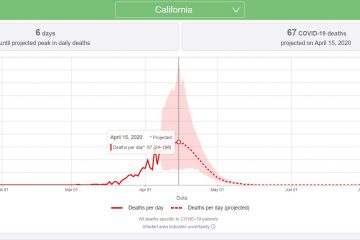Is this SF’s Hottest Summer Ever? We Asked a Meteorologist
July in San Francisco is famous for being full of fog, wind, and tourists from Wisconsin buying several ‘I Heart SF‘ windbreakers and huddling together for warmth in a Peet’s Coffee. If you’ve lived in San Francisco long, you may have noticed that the last two summers have been surprisingly…not freezing cold. I live by Dolores Park (part of the SF ‘banana belt) so my weather is typically 10 to 15 degrees warmer than it is at Ocean Beach on any given day, but I can’t remember when we had so many consecutive beautiful days and weekends in June and July.
I’ve even been in Golden Gate Park at night this summer, a couple times, and it wasn’t freezing cold…what is happening!?
I assumed that global warming was well on its way to changing summers in San Francisco forever, so I asked a meteorologist at Weather Underground how this warm summer stacks up with past summers, how are we doing with global warming in general, and why SF summers are generally so cold compared to rest of California. His answers may surprise you, many were not what I expected…
Q&A with Weather Underground meteorologist and blogger, Bob Henson:
BAS: Why is SF traditionally cold in July, while the rest of California is hot and ‘summery’?
Bob Henson —The summer chill in San Francisco is because of a mammoth-scale version of a sea breeze. As temperatures heat up across the flatlands of central California on a summer day, the hot air rises, and cool marine air rushes in through the San Francisco Bay, headed toward the rising heat plumes. It doesn’t usually get all the way across the valley, but it can certainly keep the peninsula air-conditioned
Is this (2017) the hottest summer is SF history?
—Not by a long shot. Meteorological summer is defined as June through August, so we’re just a little past half way. This past June ranked as the 31st warmest June in records from downtown San Francisco that date back to 1873. At SF Airport, where records began in 1945, this was the 12th warmest June. Thus far, July is running just a shade above average–not even close to record levels.
Is this the entire earth’s hottest year in recorded history?
—For the first half of 2017 (Jan-Jun), the planet is having its second warmest year in records going back to 1880. It’s running right behind 2016 and just ahead of 2015, so globally, we’re looking at quite a temperature trifecta. See https://www.wunderground.com/cat6/earth-had-its-third-warmest-june-record-noaa
What does ‘hottest’ mean? Is it the mean temperature from June-September? the median…something or other….how do you calculate this stuff?
— The mean temps for a given month at a given city (e.g., SF) are calculated by adding the high and low for each day in the month, then dividing by two to get daily averages, and then dividing by the # of days in the month. You can also examine heat in other ways: e.g., how hot have the nights been? The afternoons? If a month is fairly cool except for one scorching week, does that count as a “hot” month? Subjectivity plays into what we consider to be “hot,” but there are data to answer many of these questions once they’re posed clearly.
How fast is the globe heating up these days?
—It’s been a two-steps-forward/one-step-back process for the last century. There was distinct warming in the early 20th century, and then a leveling off from the 1940s to the 1970s that was accompanied by some very sharp cold waves in North America and Europe. It’s believed that pollution from post-WWII industry screened out sunlight during those decades. Then, as greenhouse gases continued to pile up in the atmosphere, and environmental regulations began to cut back on sun-blocking pollution, the globe began heating more quickly during the 1980s. We saw a brief slowdown in atmospheric warming from about 1998 to 2012, when the oceans were absorbing more heat than usual. Now the oceans are sending some of that heat back into the atmosphere (much of it in the form of El Niño), and we’ve seen a very sharp rise in the last 3-4 years. Based on some multidecadal patterns in the Pacific, it appears possible this ramped-up heating could extend into the 2020s. Check out the year-by-year data here:
https://www.ncdc.noaa.gov/cag/time-series/global/globe/land_ocean/ytd/12/1880-2017
Do you think SF is going to continue to get noticeably hotter…like the rest of the planet?
—Most of the planet is expected to keep warming, especially as we roll into the latter 21st century. Areas along the immediate Pacific Coast from San Francisco to Seattle will be buffered somewhat by the marine influence, since oceans take a long time to warm up and prevailing currents will keep this part of the Pacific coast fairly cool. However, inland areas such as the San Joaquin Valley could warm up quite a bit more than the coastal cities, and there will be times this heat extends into San Francisco. Picture a future climate where most days are the same or a touch milder than you’re used to, peppered with occasional hot spells that could be more intense than anything you get now.
What happens to the new Salesforce Tower if global sea levels go up 5ft?
—I’m not familiar enough with the Salesforce location and its geography to weigh in.
Weather Underground has a site and app that displays hyper accurate temperature and weather data from all over the world, including San Francisco, so they know their stuff! We thank them for taking the time to answer our questions, check them out and nerdout on climate data here: www.wunderground.com







